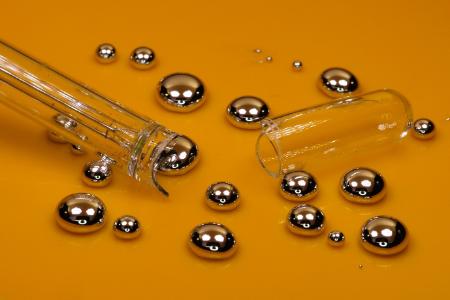
Mercury is a highly toxic metal that is liquid at room temperature and is commonly known as quicksilver due to its appearance. It is a naturally occurring element that can be found in the earths crust. In its natural form it typically does not present a risk to humans or the environment. However, humans have mined and used mercury for thousands of years and this has significantly increased the levels of mercury present in our air, water and soils.
Mercury exposure even in small amounts may cause serious health effects such as:
Mercury in the environment also has a significant impact on wildlife, including reducing the fertility of affected animals and also changing their behaviour.
In Europe the major sources of mercury release into the environment are through:
The chlor-alkali industry in Europe is no longer allowed to use mercury catalysts, hence it is not a big source in Europe but globally it is significant. Mercury released into the air can travel very large distances, and hence there are impacts associated with mercury even in areas where mercury usage or release is relatively low.
Products which may contain mercury include:
These are minor sources of human exposure to mercury, the primary human exposure route to mercury is through diet. Humans can be exposed to mercury through eating fish and shellfish. In general, the levels of mercury in fish depends on the size and age of the fish and on whether the fish is a predatory fish. Larger predatory fish such as shark, swordfish or tuna will tend to have higher levels of mercury. Herbivorous or smaller fish will have lower levels. It is for this reason that dietary advice, such as from the Food Safety Authority of Ireland (FSAI), recommends that certain vulnerable groups such as pregnant women limit their intake of fish such as tuna. However, the FSAI also stress that fish is an important element of a balanced diet.
Mercury is transported globally in the environment and as a result of this fact, global action on mercury is needed. This has come in the form of the Minamata Convention which was named after the worst historical case of mercury poisoning which occurred in the city of Minamata, Japan from 1932 to 1968, where mercury was released in the industrial wastewater from a chemical plant. The Minamata Convention, an international treaty to prevent the negative effects of mercury in the environment, was adopted and opened for signature on 10th October 2013. The EU and 86 countries signed the Convention on the first day it opened for signature. In total the Convention has 128 signatories. The Convention is a global legally binding instrument on mercury. The treaty is designed to protect human health and the environment from man-made emissions and releases of mercury and mercury compounds.
Even before the Minamata Convention came into effect, Europe had put in place extensive legislation to limit mercury use. A number of pieces of European Environmental Legislation exist to tackle the levels of mercury in the environment:
EU legislation has banned the use of mercury in the following:
Since July 2018 European legislation has also prohibited the use of dental amalgam (i.e. dental filling containing mercury) in the following cases:
The regulations also require dental practitioners to minimise the levels of dental amalgam entering wastewater by using dental amalgam separators.
Metallic mercury waste must be transported in accordance with Council Directive 2006/12/EC, Council Directive 2008/98/EC, Commission Decision 2014/955/EU and in accordance with current ADR Regulations for road, RID Regulations for rail and with IMDG Code for sea.
A Guidance Document for the Transportation of Metallic Mercury Waste for Hazardous Waste Collection Permit Holders is available here.
Metallic mercury waste must be stored in accordance with Regulation (EU) 2017/852 on mercury.
A Guidance Document for the Storage of Metallic Mercury Waste for Hazardous Waste Transfer Facilities is available here.
Check out the European Commission Mercury Webpage
Find out more about how mercury can enter our bodies
Find out more about the Minamata Convention on Mercury
Download Minamata Convention text and Annexes
Read about Mercury and Fish Consumption
Download EEA Report No 11/2018 Mercury in Europe’s Environment
Download Research Report No 307 Study on Usage and Waste Management of Amalgam Dental Fillings and Mercury-free Alternatives
Find information on industrial emissions of mercury in Ireland through the Irish Pollutant Release and Transfer Register reporting at: https://gis.epa.ie/EPAMaps/PRTR